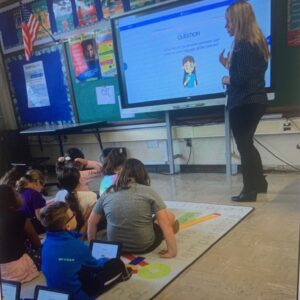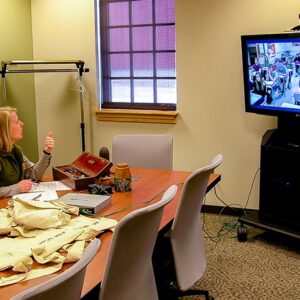By now it has become a truism to say that Covid-19 has changed the way people interact. Classroom learning, one of the most crucial forms of face to face communication, is now just a memory for 1.2 billion children in 186 countries worldwide.
The future is also uncertain at this point. As the Covid-19 pandemic makes its way around the globe, waxing and waning in different countries and regions, conditions change and we are continuously trying to adapt to them. For the time being, there is no certainty even about whether schools will re-open in September in the US or where that may occur if some states give the reopening the go-ahead.
What we do know at present is that the shift to online teaching has not been an easy one; and even now, when months after its inception educators have found solutions and smoothed out the systems, there are still challenges to be overcome both for the students and the educators. To learn more about the pros and cons of remote learning and its challenges, we have interviewed Audrey Ahlers Bullaro, an educator with expertise in the field, who has been centrally involved in organizing and facilitating remote learning in her Long Island School District.

What role do you play in facilitating the teacher’s ability to teach online?
“As an Elementary STEAM teacher, I have a technology background and a Master’s Degree in Educational Technology. STEAM stands for science, technology, engineering, art and math. I teach a class that integrates all these subjects so that the students may get an introduction to the concept of interdisciplinarity, and an interdisciplinary curriculum.Without being asked by our administration, my colleague and I joined with the district’s technology integration specialist and held daily Google Meet webinars to teach teachers how to use the different tools available to them. We also held Open Q & A Sessions to allow teachers to join a Google Meet and ask questions about any technology problems they were having. This is what teachers do. We do not compete with one another; we help each other and support each other because we all want the best for the kids.”
What are some of the most common problems that you’re asked to solve?
“It took a lot of time for some teachers to learn how to use Google Classroom which is a platform for posting assignments for students and having them edit the work and turn it back in to the teacher online. Again, teachers with older students were already comfortable with this but it wasn’t age appropriate to teach that way with younger students. Other teachers needed help finding the best programs to work for their special content area.”
As an educator, what is your general opinion of online teaching?
“I believe that online teaching is not what is the best for students, parents or teachers. Especially with the younger kids.”
Is it an effective way to learn or is it just going through the motions for the student?
“It really depends on the tools the teacher is using and how comfortable they are with technology and also whether the students were already comfortable using the technology programs. I think everyone would agree that you can never replace the in-person benefits of a teacher being with the students. Some tools can be effective, for example, for teaching rote facts or having students watch interesting, well-made videos. There are some excellent programs too. Some offer points or rewards for correct answers and some are adaptive, so students get personalized questions based on the level of difficulty that they have shown to be able to answer on previous questions. Most teachers are meeting with students on video calls because it is important to maintain that face to face connection. Older students tend turn their cameras off.”
What are the particular challenges of learning online for the student?
“That depends on the age of the students. Kindergartners have difficulty signing in to their school accounts without the teacher there to help them. Some children do not have parents that are familiar with the types of technology the schools are using and can’t help their children, so they may lack necessary guidance to access the online teaching.”
And what are the challenges from the teacher’s perspective?

“Some teachers were already using technology with their classes and students had district-issued devices, but for the younger elementary classes that were not using online tools, the transition was very difficult. The teachers were not given very much warning. Had they known that when they left school on Friday, March 13th, they would be teaching from home for the rest of the year, they would have prepared students and taught them how to use these tools with appropriately paced lessons, and they would have been able to see which children needed help. But they left school with the idea that school would be closed for a week or two and they had to first teach students how to use technology from a distance before teaching content. In some cases, they had to call each parent and walk them through the process of logging the kids into school accounts. Teachers answered hundreds of frustrated parents’ emails with pleas for help. And in many cases, teachers themselves had to quickly learn how to use programs that other teachers had had years to become comfortable with. They had to take 20 plus years of expertise and completely reinvent their work in a matter of days.”
What other frustrations did you experience or observe in the process?
There is also the challenge of getting students to participate and turn in work. Some students did not have devices, so the school districts had to lend them out. Some teachers were sick or had family members that were sick or dying. Some parents were essential workers and could not be home all day to help their children with school work. Others were very sick and had to be isolated from their children who desperately needed help. Many children are suffering from anxiety, and the transition to online learning was a struggle. So, while teachers rose to the occasion and did everything in their power to educate their students as best as they could, it is in no way the best way to teach or for students to learn. Nevertheless, we used all our good will, patience and skills and made sure that the students got the best experience possible under the circumstances.
You yourself have three children, what has it been like for you as a parent of school-age children during this difficult time?
“As a parent of two middle school children and one high school student, remote learning was extremely challenging. Children need routine and consistency and being home does not offer the same structured environment that they would have in the classroom. Many parents, including myself and my husband, are working from home and are expected to be on calls with colleagues and fully attentive to our work while at the same time, helping our children navigate their school assignments and schedules of Google Meets. Suddenly, we went from a lifestyle where we all left the house by 8 AM and were capable of independently doing what we needed to do to be successful, to now having to feed a family three meals a day in the house while needing each other to be quiet during video calls This can create a bit of a stressful environment. We try to stay optimistic and are grateful for the newfound time together as a family. Before the pandemic, we seldom had time to have sit down dinners together during the week because of a very busy sport schedule. Now we can, and that’s a huge plus.”
Do you think that the COVID-19 pandemic will change the nature of education in a permanent way?
“Yes, I think teachers that did not use technology in the past will now incorporate some of the programs that they have found to be fun or useful. I think that if we start the school year in person in September, teachers will immediately prepare students for the possibility of closing again. As teachers, we are planners by nature and we always want to be ready for the unexpected.”












